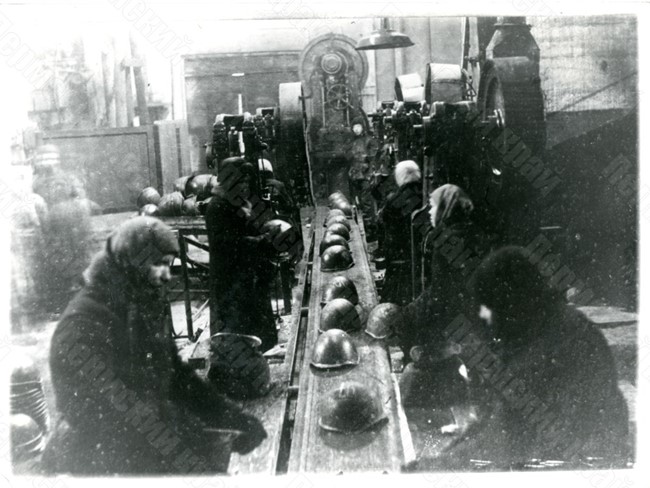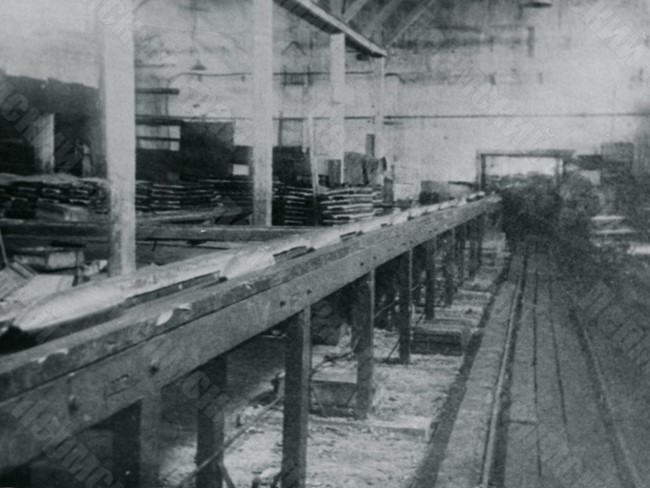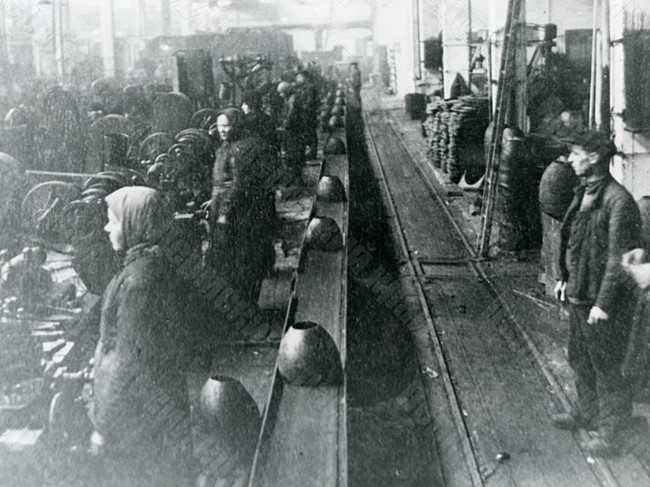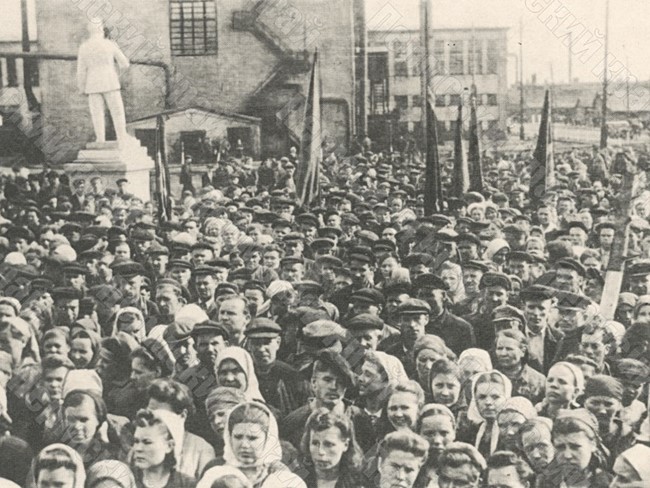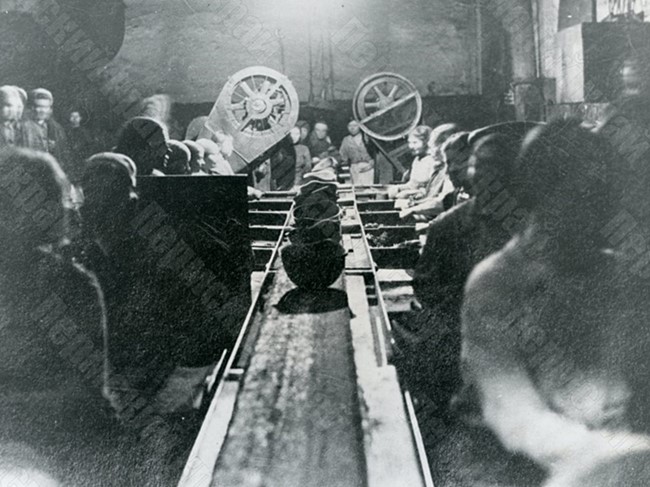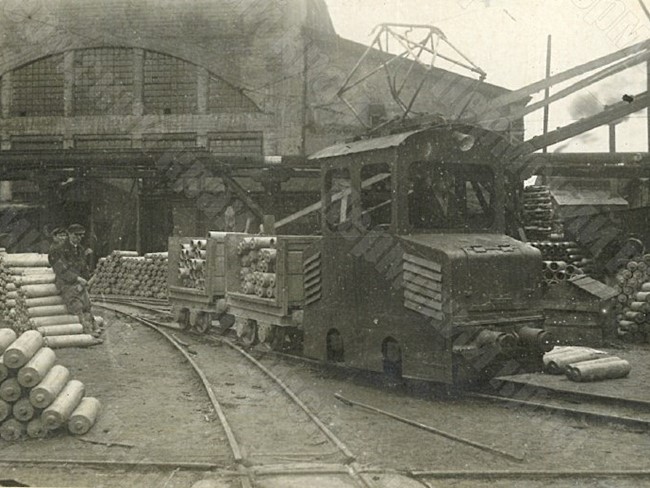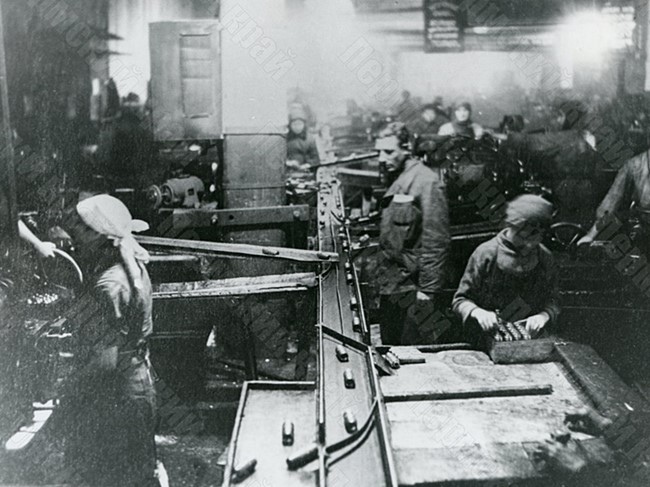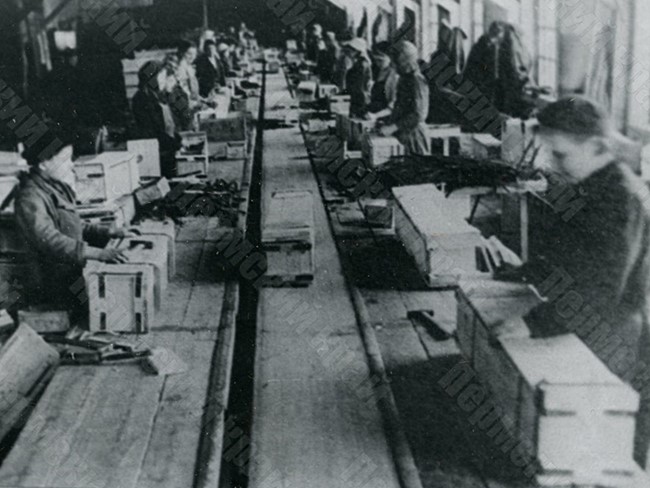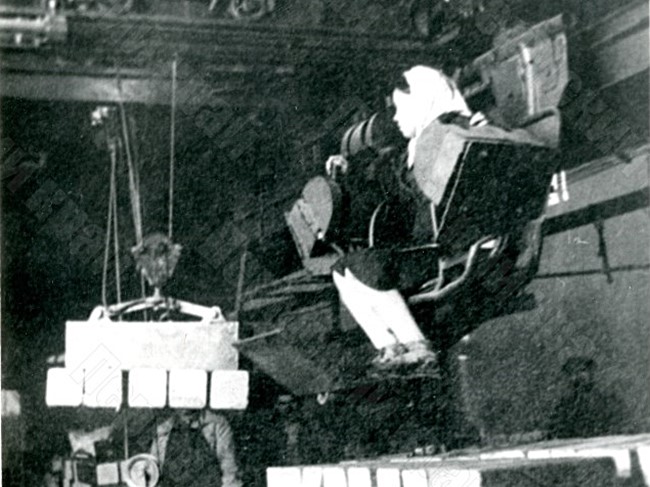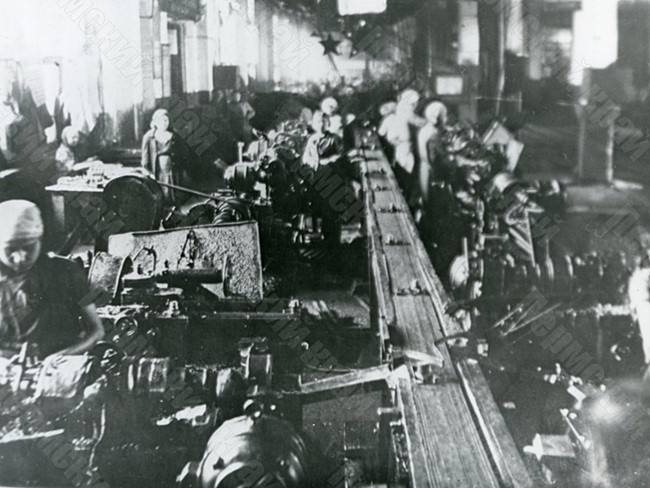Personal Stories
The Story of the artist Pyotr Oborin
Pyotr Artemyevich Oborin was born in 1917 in the settlement of Lysva Metallurgical Plant in the District of Perm Province in the family of a metal sheet-rolling worker. In 1937, he graduated from the Perm College of Art and worked as an artist in the Stalin Culture Club, and after that, he was an artist at the Perm Regional History Museum. During the Great Patriotic War, P.A. Oborin worked at the Perm Union of Artists’ agit-prop studio for the production of placards and propaganda posters. Pyotr cut out stencils for printing propaganda posters and worked on the creation of sketches for posters and leaflets, and compiled texts for posters. In 1942, P.A. Oborin was sent on a business trip to the Lysva Metallurgical Plant with the aim of creating a series of drawings showing the labor activity of a large industrial enterprise in the Molotov Region during the Great Patriotic War.
At the Lysva Metallurgical Plant, Pyotr walked around almost all the workshops and made many drawings showing the activities of the workers of this company. In particular, he spent a lot of time in the plant’s sheet-rolling shop, making drawings of the sheet-rolling operatives who were working under the same difficult conditions and with the same dedication as his father once did. Pyotr often had occasion to draw women and girls manufacturing army helmets. To the artist's questioning about how they coped with such an entirely unfeminine work, almost all the workers of the Lysva Metallurgical Plant answered that in no way were any difficulties an obstacle for them because they were aware of the importance of their work, for a helmet made by them saved the life of their husband, father, son or brother serving at the front.
P.A. Oborin made several drawings of a young turner at the Lysva Metallurgical Plant, S.A. Vyshkvarka. This sixteen-year-old worker was engaged in the manufacture of casings for shells and mines. S.A. Vyshkvarka mastered his turning skills quickly and well and regularly exceeded the production quota, sometimes by almost 300%. Pyotr once asked the young work-leader, how could he so successfully perform work which not any grown man could manage. S.A. Vyshkvarka replied that many of his relatives were in the army at this time and he would do his best to help his own: the more shells and mines he made, the more would come down upon the heads of German soldiers and officers and the sooner Victory would come.
During his business trip to the Lysva Metallurgical Plant in 1942, P.A. Oborin made several dozens drawings, pencil outlines and sketches. They were exhibited at the Molotov Regional Art Exhibitions in 1942 and 1945 and everywhere aroused great interest among the visitors. The value of Pyotr's drawings was also recognized by professional artists and that same year, 1942, he was accepted as a member of the Union of Artists of the Russian Socialist Republic. Subsequently, on the basis of his drawings, P.A. Oborin made a series of large paintings on the subject of the work of the Lysva Metallurgical Plant during the Great Patriotic War: "Sheet Metal Workers", "A Soldier's Helmet", "The Helmet" and "Shells to the Front".
During his long life as an artist P.A. Oborin created dozens of wonderful landscapes, portraits and genre paintings, meeting with many famous people and working in various regions of the country and in various settlements in the Kama area. However, he always recalled with special warmth his trip to the Lysva Metallurgical Plant in 1942 and his encounters with the workers, who, despite the difficulties of wartime, made the helmets, shells and field kettles required for the front and who, with all their efforts, brought nearer the Victory in the Great Patriotic War.
Shakhov V.Yu. Lysva helmet in the works of artists, writers and poets. - Perm, 2007, p. 4-10
Molotov (Perm)
Solikamsk
